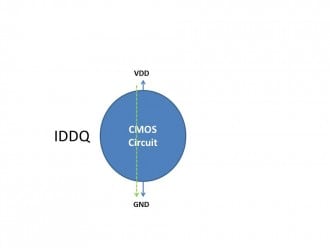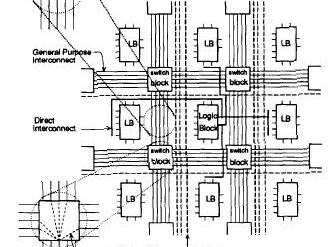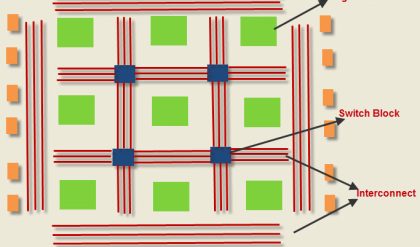Regenerative switching circuits such as Astable Multivibrators are the most commonly used type of relaxation oscillator because not only are they simple, reliable and ease of construction they also produce a constant square wave output waveform.
Unlike the Monostable Multivibrator or the Bistable Multivibrator we looked at in the previous tutorials that require an “external” trigger pulse for their operation, the Astable Multivibrator has automatic built in triggering which switches it continuously between its two unstable states both set and reset.
The Astable Multivibrator is another type of cross-coupled transistor switching circuit that has NO stable output states as it changes from one state to the other all the time. The astable circuit consists of two switching transistors, a cross-coupled feedback network, and two time delay capacitors which allows oscillation between the two states with no external triggering to produce the change in state.
In electronic circuits, astable multivibrators are also known as Free-running Multivibrator as they do not require any additional inputs or external assistance to oscillate. Astable oscillators produce a continuous square wave from its output or outputs, (two outputs no inputs) which can then be used to flash lights or produce a sound in a loudspeaker.
The basic transistor circuit for an Astable Multivibrator produces a square wave output from a pair of grounded emitter cross-coupled transistors. Both transistors either NPN or PNP, in the multivibrator are biased for linear operation and are operated as Common Emitter Amplifiers with 100% positive feedback.
This configuration satisfies the condition for oscillation when: ( βA = 1∠ 0o ). This results in one stage conducting “fully-ON” (Saturation) while the other is switched “fully-OFF” (cut-off) giving a very high level of mutual amplification between the two transistors. Conduction is transferred from one stage to the other by the discharging action of a capacitor through a resistor as shown below.
Basic Astable Multivibrator Circuit

Assume a 6 volt supply and that transistor, TR1 has just switched “OFF” (cut-off) and its collector voltage is rising towards Vcc, meanwhile transistor TR2 has just turned “ON”. Plate “A” of capacitor C1 is also rising towards the +6 volts supply rail of Vcc as it is connected to the collector of TR1 which is now cut-off. Since TR1 is in cut-off, it conducts no current so there is no volt drop across load resistor R1.
The other side of capacitor, C1, plate “B”, is connected to the base terminal of transistor TR2 and at 0.6v because transistor TR2 is conducting (saturation). Therefore, capacitor C1 has a potential difference of +5.4 volts across its plates, (6.0 – 0.6v) from point A to point B.
Since TR2 is fully-on, capacitor C2 starts to charge up through resistor R2 towards Vcc. When the voltage across capacitor C2 rises to more than 0.6v, it biases transistor TR1 into conduction and into saturation.
The instant that transistor, TR1 switches “ON”, plate “A” of the capacitor which was originally at Vcc potential, immediately falls to 0.6 volts. This rapid fall of voltage on plate “A” causes an equal and instantaneous fall in voltage on plate “B” therefore plate “B” of C1 is pulled down to -5.4v (a reverse charge) and this negative voltage swing is applied the base of TR2 turning it hard “OFF”. One unstable state.
Transistor TR2 is driven into cut-off so capacitor C1 now begins to charge in the opposite direction via resistor R3 which is also connected to the +6 volts supply rail, Vcc. Thus the base of transistor TR2 is now moving upwards in a positive direction towards Vcc with a time constant equal to the C1 x R3 combination.
However, it never reaches the value of Vcc because as soon as it gets to 0.6 volts positive, transistor TR2 turns fully “ON” into saturation. This action starts the whole process over again but now with capacitor C2 taking the base of transistor TR1 to -5.4v while charging up via resistor R2 and entering the second unstable state.
Then we can see that the circuit alternates between one unstable state in which transistor TR1 is “OFF” and transistor TR2 is “ON”, and a second unstable in which TR1 is “ON” and TR2 is “OFF” at a rate determined by the RC values. This process will repeat itself over and over again as long as the supply voltage is present.
The amplitude of the output waveform is approximately the same as the supply voltage, Vcc with the time period of each switching state determined by the time constant of the RC networks connected across the base terminals of the transistors. As the transistors are switching both “ON” and “OFF”, the output at either collector will be a square wave with slightly rounded corners because of the current which charges the capacitors. This could be corrected by using more components as we will discuss later.
If the two time constants produced by C2 x R2 and C1 x R3 in the base circuits are the same, the mark-to-space ratio ( t1/t2 ) will be equal to one-to-one making the output waveform symmetrical in shape. By varying the capacitors, C1, C2 or the resistors, R2, R3 the mark-to-space ratio and therefore the frequency can be altered.
We saw in the RC Discharging tutorial that the time taken for the voltage across a capacitor to fall to half the supply voltage, 0.5Vcc is equal to 0.69 time constants of the capacitor and resistor combination. Then taking one side of the astable multivibrator, the length of time that transistor TR2 is “OFF” will be equal to 0.69T or 0.69 times the time constant of C1 x R3. Likewise, the length of time that transistor TR1 is “OFF” will be equal to 0.69T or 0.69 times the time constant of C2 x R2 and this is defined as.
Astable Multivibrators Periodic Time

Where, R is in Ω’s and C in Farads.
By altering the time constant of just one RC network the mark-to-space ratio and frequency of the output waveform can be changed but normally by changing both RC time constants together at the same time, the output frequency will be altered keeping the mark-to-space ratios the same at one-to-one.
If the value of the capacitor C1 equals the value of the capacitor, C2, C1 = C2 and also the value of the base resistor R2 equals the value of the base resistor, R3, R2 = R3 then the total length of time of the Multivibrators cycle is given below for a symmetrical output waveform.
Frequency of Oscillation

Where, R is in Ω’s, C is in Farads, T is in seconds and ƒ is in Hertz.
and this is known as the “Pulse Repetition Frequency”. So Astable Multivibrators can produce TWO very short square wave output waveforms from each transistor or a much longer rectangular shaped output either symmetrical or non-symmetrical depending upon the time constant of the RC network as shown below.
Astable Multivibrator Waveforms

Astable Multivibrator Example No1
An Astable Multivibrators circuit is required to produce a series of pulses at a frequency of 500Hz with a mark-to-space ratio of 1:5. If R2 = R3 = 100kΩ, calculate the values of the capacitors, C1 and C2 required.

and by rearranging the formula above for the periodic time, the values of the capacitors required to give a mark-to-space ratio of 1:5 are given as:






